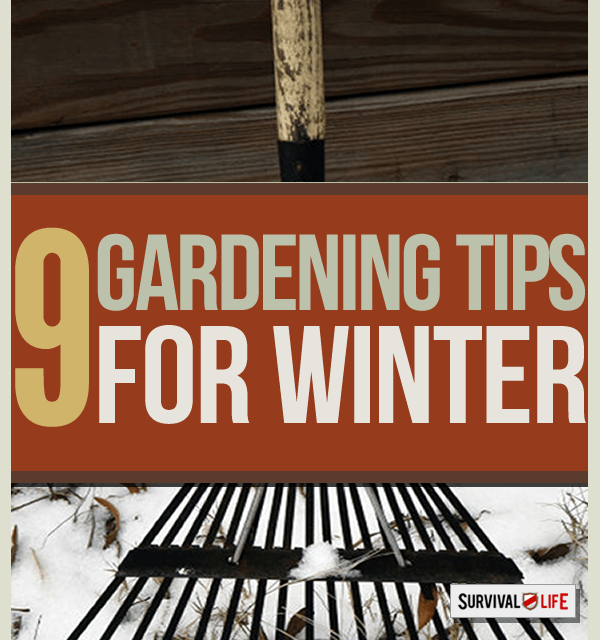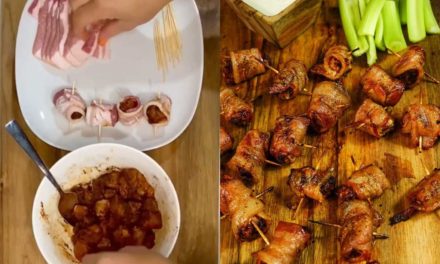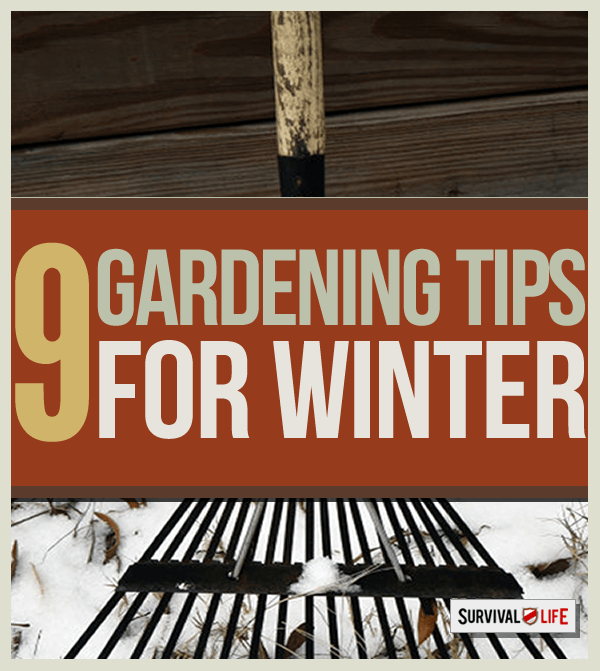
Just because the weather’s cold doesn’t mean you have to stop growing your own food. Check out our winter gardening tips and feed yourself all winter long.
The Prepper’s Guide to Winter Gardening
Some people may think that winter gardening is impossible. But believe it or not, this is untrue. Anyone can still grow a number of plants, vegetables, herbs and flowers in cold and even freezing temperatures.
As a matter of fact, maintaining a winter garden is very beneficial. It helps not only the gardener himself but also the environment. There are many techniques that can help you garden any time of the year. The cold and frost of winter should not be a hindrance to using your green thumb.
The Perks of Winter Gardening
One interesting advantage of winter gardening is that it gives us the chance to become healthier. Gardening is considered to be a form of exercise. During winter, people tend to avoid the chilly outdoors and choose to spend the whole day snuggling under the sheets. If you were busy gardening, you would have no choice but to get out, be active and look after your plants.
If you have chosen to plant herbs and other vegetables, it does not only help you eat better and healthier but also allows you to save money. During winter, prices of produce increase since the supply decreases. But by following these winter gardening tips, you can just pick whatever you want without having to worry about supply. Gardening in winter can also uplift the gloomy feeling that some people experience in very cold and gloomy weather. Planting flowers can give additional color and fragrance to the white and bland color of snow.
Gardening in the winter is tricky yet very satisfying. You just have to know what needs to be done and what techniques to use in order to successfully grow a fruitful and a beautiful garden.
Winter Gardening Tips for Preppers
It may still be autumn, but this is the right time to get your garden ready for winter. You can plant evergreens and bulbs, water and feed your existing plants with nitrogen-rich fertilizers. It is also a great time to prepare your flower and vegetable patches so that they’ll be perfect for growing when spring comes. Your plants, trees and grounds will also benefit from a good cleaning up. Apart from the fallen leaves, fruits and debris, you need to remove any rot or disease from branches.
With these winter gardening tips, you will see that after the cleaning, watering and feeding, you also need to cover some of the plants with mulch. Apply mulch, hay or straw depending on what patches you have.
To read the full article, click here.
1. Keep your flora from freezing.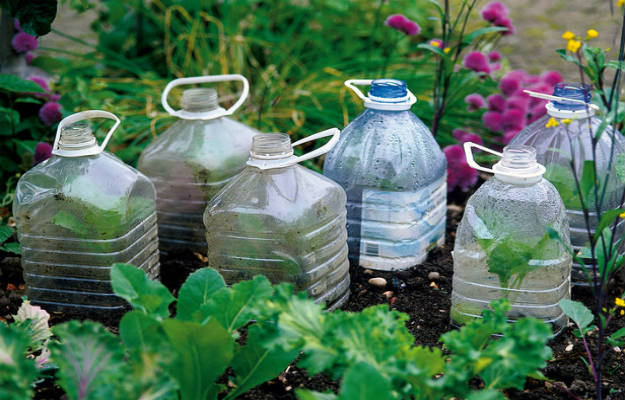
- image via diynetwork
Protect any tender herbs from frost. January and February are usually the coldest months. Bay, myrtle, olive and French lavender can be brought undercover or near the house if in containers, or covered in fleece in situ. Put a cloche over thyme you use for cooking and it will stay leafier. Prune wisteria and grape vines if they have not been done already. On any frost-free days, plant bare root or container trees, shrubs, hedging, fruit bushes and canes.
Via www.countryfile.com.
2. Grow hardy plants for the cold months.
The second on the list of our winter gardening tips are the vegetables can endure the cold weather: lettuce, kale, parsley, chives, ornamental cabbages and nasturtium. One of the To protect your fall vegetables, install a cold frame. See more.
Video via Growing Wisdom.
3. Prepare raised beds.
According to motherearthnews.com, “A winter garden must be well drained, since any water in the soil could freeze and damage delicate roots. The best way we know to insure good drainage is to plant winter crops in raised beds. Our regular garden consists of 16 elevated plots, each of which measures 3-by-24 feet. We normally use only three or four of these beds for cold-weather vegetables.
This is one of the winter gardening tips to help protect your crops.To prepare a deep bed, we first dig down a foot or more and fill the cavity with a mixture of leaves, grass, old hay, kitchen garbage, and pony or chicken manure. Once we’ve produced a compost pile that rounds up about two feet above the surrounding surface, we cover the mound with a thin layer of topsoil and plant our seeds without waiting for the decomposing material to “cook down.” When a good amount of organic matter is used, the soil will hold enough moisture for the plants and any excess water will drain off.”
4. Mind the weather.
Our list of winter gardening tips would not be complete without considering the weather. Snow both protects and endangers plants. A good snow cover insulates the soil like a mulch. However, snow piled on evergreen branches weights them down, risking breakage. Knock snow from the bottom branches first, then work upward. This way snow from above will not add weight to the already burdened lower branches. If branches are bowed by ice, don’t try to free them. Instead let the ice melt and release them gradually. Read more.

5. Start your seeds indoors.
Winter gardening tips should also be called tricks and this is one is interesting. Starting seeds indoors has a ton of advantages – starting from seed is cheaper than buying seedlings, you can harvest a plant’s bounty earlier, and if you use uncontaminated soil, your seedlings can be stronger and healthier than factory-raised specimens. Plus, if you save your own seeds over the years, you can create one-of-a-kind varieties that will be the envy of heirloom gardeners the world over. Via home.howstuffworks.com.
Winter Gardening: The Do’s
- Continue to plant — as long as the ground is soft enough to dig a hole.
- Add mulch. It will help keep root temperatures stable.
- Add compost. It supplies organic nutrients to the soil (but no more than three inches thick).
- Give container plants extra protection. Cover with frost cloth or other heat retentive blankets and move pots and other containers close to the foundation of the house or under eaves.
- Bring in houseplants. Spray both sides of the leaves with an insecticidal soap and water thoroughly with an insecticidal drench that is safe for people and pets to kill hitchhiking critters.
- Position plants indoors where they will receive indirect, bright light for at least five hours a day. Be sure to keep them away from drafts and heating vents and water sparingly because most houseplants do not actively grow in winter.
From mnn.com.
Winter Gardening: The Don’ts
- Fertilize. This is a time for garden plants to go dormant and rest. Forcing them to start new growth before the ground warms in the spring not only interrupts this period when they are rejuvenating but ice storms and temperatures below freezing or even hard frosts will kill tender new growth.
- Skip your regular watering cycle. During dry periods when the ground isn’t frozen or covered with snow, a once-a-week deep watering is beneficial. New plantings especially need to be watered in.
- Worry about bulb foliage. Leaves of daffodils and other spring-flowering bulbs should be just fine during temperature dips. See more.
Saving Money Through Winter Gardening
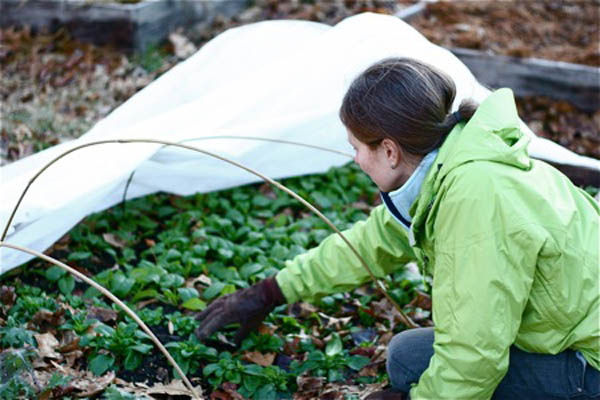
- image via creativegardenideas
Of all the winter gardening tips this one is the most attractive. One of the greatest benefits of a winter garden is the savings to your grocery bill. Produce costs more during the winter, especially organic produce. Many winter vegetables ship poorly, so freshness is compromised. It makes even more sense to grow your own food in the winter than in the summer. But the benefits to a winter garden don’t end there.
Timing is of the Essence
Timing is critical when you are planning your winter vegetable garden. It is important to know the first average frost date for your location. Usually you can find this out by looking at a map of growing zones. Find where you live on the map, and then see what zone it places you in. The chart that goes with the map will usually tell you the first and last frost dates for your zone. You can also call your local Extension Service office and ask them.
Once you know when to expect your first hard frost, you can then determine how long it takes for your chosen vegetables to mature. Typically, you will find this information on the back of your seed packet. If you are purchasing seedlings, check for a tag that tells you the days to maturity for that variety of plant. Learn more.
We hope that these winter gardening tips will keep you busy and productive throughout the cold season. If you have other tips to add, please let us know in the comments!
Check out related articles from our site:
Survival Life’s Winter Survival Kit
DIY Indoor Vertical Herb Garden
Winter Survival Tips For The Homestead

